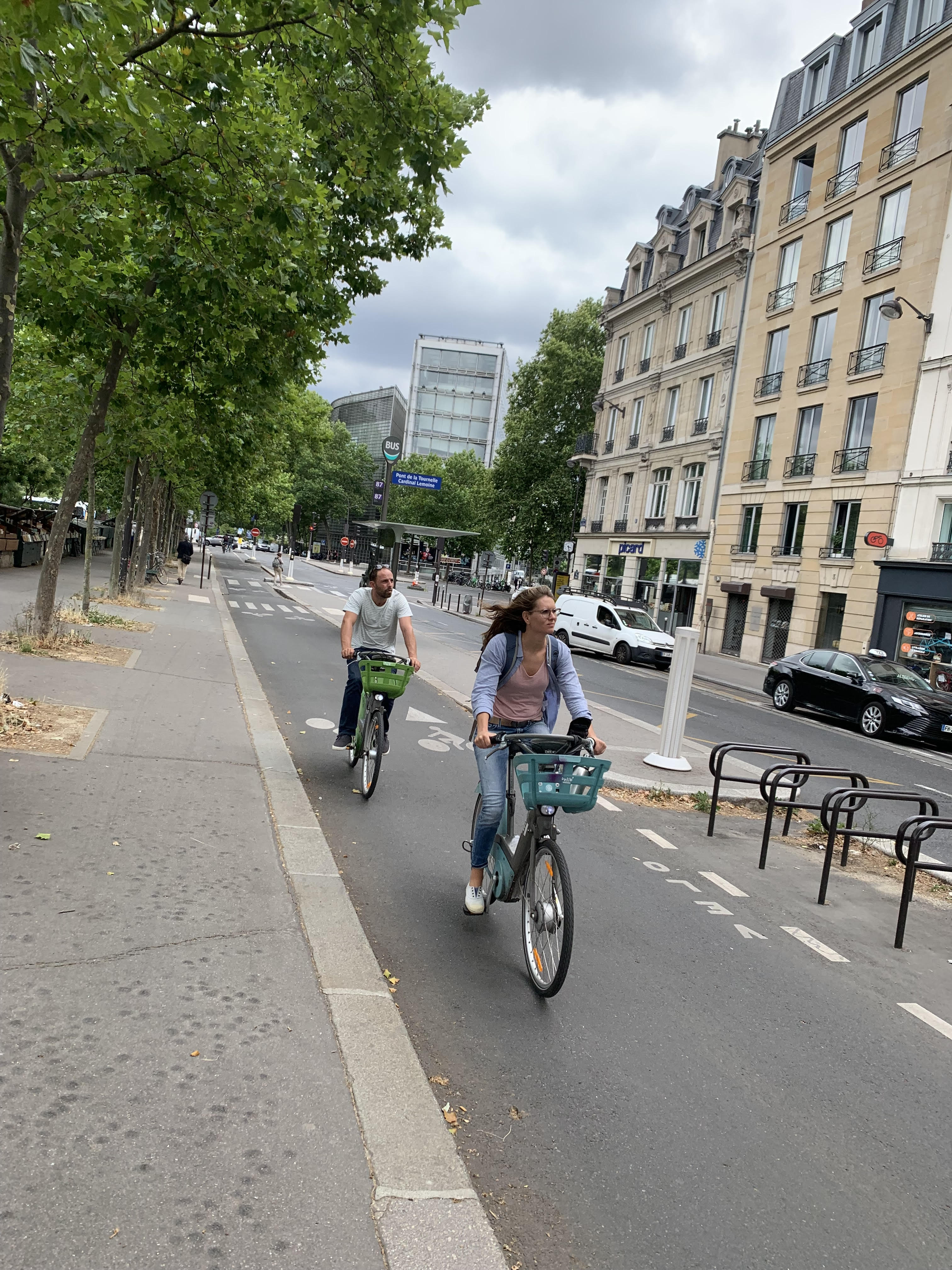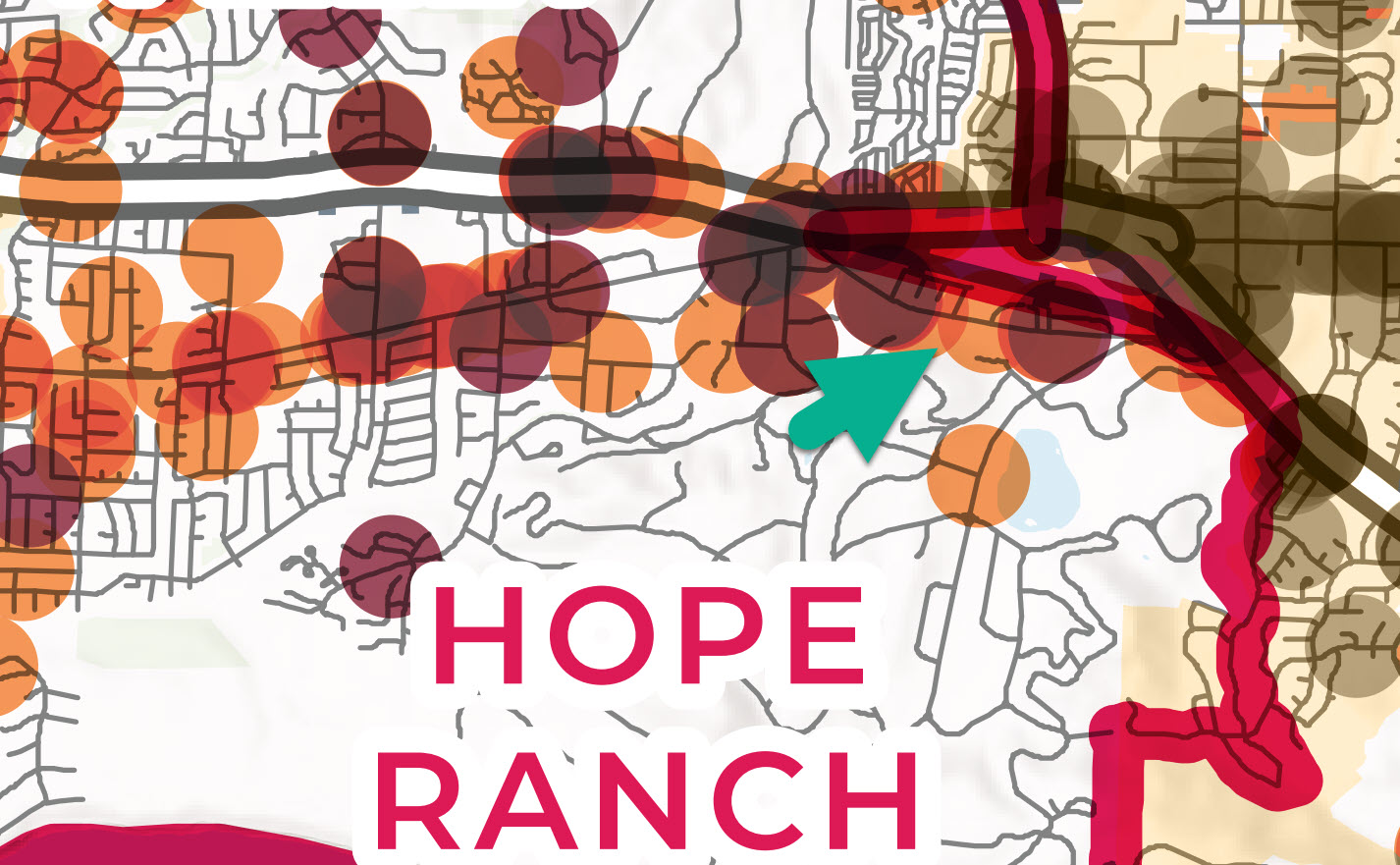By Katie Davis
I spent time in France this summer marveling at how cities can be transformed by bike paths. In Paris, separated bike paths are everywhere, including the busiest sections along the Seine, and the city is cleaner and less polluted as a result. Bordeaux has been transformed with the addition of trams and bike paths, and streets closed to cars. Apparently, they’ll give you a free bike if you live there.

There are examples in California as well. In the City of Davis, which extended separated bike paths from its UC campus to the rest of the city, fully 20% of commutes are made by bike. Providing safe, separated bike paths is particularly beneficial for poorer residents, students, young people, pedestrians, the handicapped, and anyone who would like to drive less. But is also an important climate action. Studies find that swapping the car for walking, cycling and e-biking even just one day a week makes a significant impact on personal carbon emissions in cities. Cyclists have 84% lower CO2 emissions from all daily travel than non-cyclists.
With our temperate weather, relatively flat cities and with infrastructure money now available to fund transportation, our region could become far more bike friendly. The Sierra Club has supported local Active Transportation Plans that improve infrastructure for bikes and pedestrians, and we’re pleased to see more separated bike paths such as the recently completed and beautiful Las Positas bike path in Santa Barbara.
Goleta is now taking comments on the San Jose Creek bike path, which would connect the popular separated paths from UCSB and Goleta Beach to the rest of the City of Goleta, including a new 101 underpass. There has been some movement in restriping Old Town Goleta to make it safer for bikes as well, and we encourage the City to move forward.
On the other end of that path, Santa Barbara County has a unique grant opportunity to complete a missing gap in the popular Coastal Access Route by connecting the Obern Trail from Goleta to the City of Santa Barbara’s newest bike paths on Modoc and Las Positas. The Modoc Path is important because Modoc has a relatively high accident rate, including biker deaths and severe injuries.
Unfortunately, there is a time limit on the $5 million grant and the plan faces obstacles because of some initial community opposition to the loss of up to 63 trees. They have a point. Urban open space and mature trees are valuable and the initial number of trees impacted in the Modoc Preserve sounded alarming. However, the County can build a shady, multi-use path that minimizes the loss of mature trees. The latest iteration of the plan reduces removal to 49 trees, with another alignment option only removing 22 trees at most. Most of the trees removed would be eucalyptus, a non-native and highly flammable tree. As a mitigation, the County would plant oak trees, which are quick-growing, and both native and fire resistant. This is a better long-term choice given climate change and hotter, windier conditions.
It should also be noted that non-native tree removal is part of conservation management because non-native trees like eucalyptus can use so much groundwater than they dry out wetlands, kill and crowd out other trees and plants, and require constant maintenance. Aging trees also rot from the inside and pose dangers of falling. The County consulted with conservation experts to plan path options that will benefit both users and the environment.
We are going to need to support city and county planners and decision-makers if we want to improve our bike infrastructure. Start by signing SB Bike's petition supporting the Modoc path.
Santa Barbara County's Active Transportation Plan shows dots where there have been bike and pedestrian deaths and injuries, such as on Modoc road. Support a new multi-use path there.
